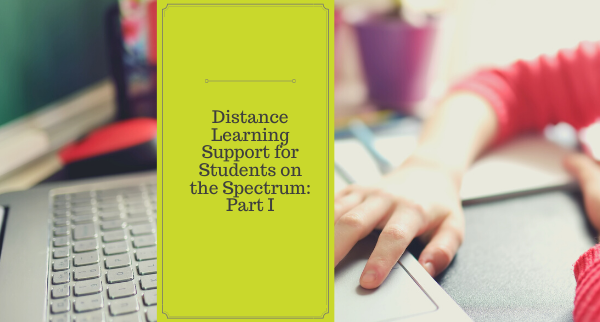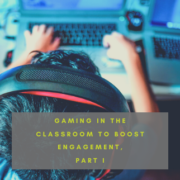Distance Learning Support for Students on the Spectrum: Part I
Distance learning, as well as the potential for hybrid and the return to in-person learning, has presented students with many unknowns. Educators and families know a lot more about how to successfully support students than we did last spring; however, there are always areas for improvement and aspects that we may be overlooking.
It is especially important to ensure that students with autism are receiving a greater level of support during this time. It is inevitable that students with autism are experiencing more significant learning challenges right now, which places them at a greater risk for learning gaps. Because of the challenges that distance learning brings, these students are impacted on a greater scale than their general education counterparts; however, there are things that educators can do to help students navigate the remainder of this precarious school year.
Building community remotely
Fostering relationships and building a positive rapport with students over Zoom has been one of the greatest hurdles of distance learning. Teachers are doing anything and everything to engage students and to reach them on a personal level. This is a critical element for student success, especially when it comes to students on the spectrum. Knowing your students means knowing their learning styles, their preferences and interests, their communication styles, and their areas of strengths and weaknesses. For students with autism, understanding and accommodating these ins and outs of learning can mean the difference between engagement and disengagement, comfort and discomfort, success and failure.
To better reach all students, teachers should consider taking the following measures:
- Present students with a survey on learning styles and make an effort to use that information for differentiation as much as possible.
- Use examples, samples, and texts that incorporate student interests, especially instructional resources that connect to your students with autism on a personal level. Making sure they are acknowledged, appreciated, and understood is the first step to building strong relationships.
- Arrange alternative or additional modes for participation and communication. Some students, especially those on the spectrum, are highly uncomfortable on Zoom—being on camera or speaking in front of peers can be an unnecessary stressor. Some teachers may find it helpful to arrange additional office hours or check-in times to make sure students feel comfortable participating in a smaller group.
- Remind students of the chat function for participation as well—this is a great way for hesitant or shy students to answer and ask questions without “putting themselves out there.”
- Acknowledge a job well-done and provide specific examples of the growth that you have seen with your students. Those learners with unique educational needs, especially those with autism, often find that school has been a place of perpetual struggle. Therefore, when you recognize students for their accomplishments, no matter how small, the outcome of this positive reinforcement can be life-changing.
- Reach out to parents about their child’s learning history and preferences. As we all know, parents know their children best. So when it comes to getting to know your students, parents can provide a wealth of knowledge regarding a student’s interests, hobbies, academic and personal needs, friend group and peer history, etc. Teachers may want to set up a few parent Zoom meetings to help build a positive rapport there as well. Open and consistent communication between parents and teachers is essential for students with autism, especially during these difficult times.






